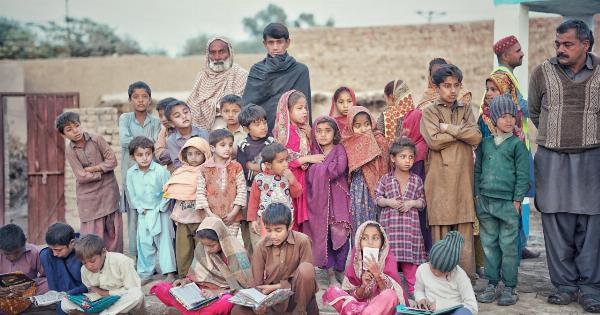Genders have always been a topic of interest.
It is a fact that males and females are different from birth, but how significant are these differences? Are these differences taught or innate? These are questions that have baffled scientists and psychologists since the beginning of time. In this article, we will explore gender differences in children, examining both the biological and environmental factors that shape gender roles.
Biological Differences
Biological differences between males and females have been known for centuries. From puberty to pregnancy to other physiological processes, biological differences play a significant role in how males and females behave.
It is essential for parents to understand that most of their children’s behavior is influenced by their natural tendencies, which cannot be changed at will. Boys typically display more physical aggression, while females show more relational aggression; both of these are innate characteristics.
Environmental Factors
In addition to biological differences, environmental factors also play a significant role in shaping gender-specific behavior in children. These factors include social norms, culture, and upbringing.
For example, children are often exposed to traditional gender messages through media, such as toys and films. Boys are expected to play with action figures and trucks, while girls are encouraged to play with dolls and tea sets. Parents can inadvertently reinforce these gender roles by implicitly or explicitly promoting stereotypical gender behaviors.
For instance, a father might praise his son for being tough and athletic while praising his daughter for being pretty and nurturing.
Language
Language is another influential factor that helps to shape gender differences in children. Children’s language patterns are often influenced by their parents, caregivers, and teachers who may use gender-specific language while speaking with them.
For example, a teacher may tell a group of boys to “man up” while encouraging girls to be “quiet and ladylike.” This type of language reinforces gender stereotypes and can affect children’s behaviour. When parents use gender-neutral language and avoid stereotypical terms, their children may be more likely to develop their interests and talents without worrying about gender limitations.
Play
Play is an essential component of childhood development, and it is another way in which gender differences are shaped. Children tend to play with toys and engage in games that align with their perceived gender roles.
Boys tend to prefer rough-and-tumble play, while girls may prefer quieter and less confrontational games, such as dress-up or make-believe play. Parents can encourage their children to engage in a variety of play types, regardless of gender, and allow them to explore their interests freely without judgment.
Aggression
Aggression is another area in which gender differences are prevalent. Research shows that boys tend to be more physically aggressive, while girls are more likely to be relationally aggressive.
Physical aggression usually involves hitting and kicking, while relational aggression is more subtle, such as gossiping, excluding, or manipulating others. Parents must monitor and intervene when necessary to discourage violent behavior by modeling and reinforcing positive interpersonal skills and conflict resolution strategies.
Emotional Expression
The expression of emotion is another area in which gender differences emerge. Boys are often taught to suppress their feelings, while girls are permitted to be more emotionally expressive.
It is essential for parents to encourage their children to express their emotions freely, regardless of gender. Children must also be taught how to manage their emotions in constructive ways, such as through communication, assertiveness, and empathy.
Academic Performance
Academic performance is another area in which gender differences are apparent. Boys often outperform girls in math and science, while girls tend to do better in language arts and reading.
Research indicates that these differences are not necessarily due to innate ability but may be caused by cultural factors. It is essential for parents and educators to create strategies that encourage girls to pursue STEM careers and for boys to excel in the language arts and other subjects where they may not be as naturally talented.
Conclusion
In conclusion, gender differences in children result from a combination of biological and environmental factors, including language, culture, play, aggression, emotional expression, and academic performance.
While there are differences between the genders, it is crucial to remember that each child is unique and may not fit into traditional gender roles. Parents must encourage their children to explore their interests freely without judgment or gender-specific restrictions. By doing so, they can help their children reach their full potential.





























